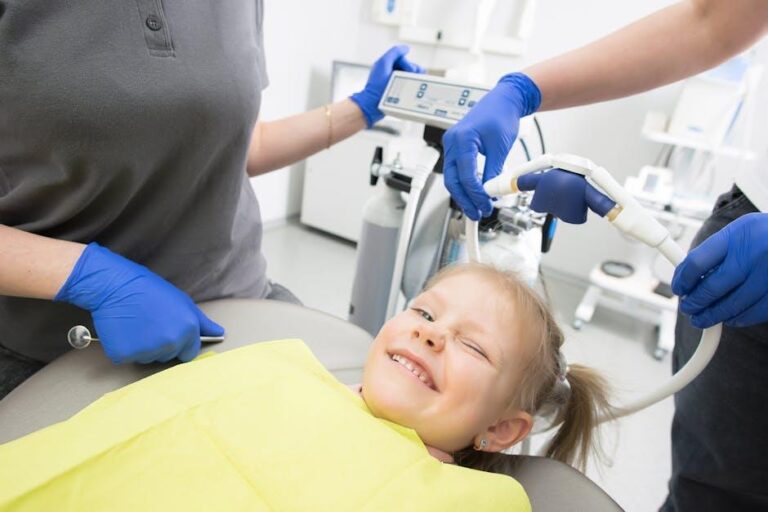1 in 3 Kids Has Dental Problems, Poll Finds – U.S. News & World Report
Dental health plays a crucial role in a child’s overall well-being. However, a recent poll highlighted a startling statistic: 1 in 3 kids in the United States has dental problems. This comprehensive article explores the poll findings, common dental issues affecting children, and practical advice for parents to ensure their little ones maintain healthy smiles. With a focus on preventive care and early intervention, this guide is designed to help families combat the growing dental health challenges among children nationwide.
Understanding the Poll: The State of Kids’ Dental Health in the U.S.
The recent poll conducted by U.S. News & World Report surveyed parents and pediatric dentists across the country to identify the prevalence of dental problems in children aged 2-12 years. The results were eye-opening:
- 33% of children reported having at least one dental problem, such as cavities, gum disease, or tooth sensitivity.
- Most common issues were tooth decay (60%) and early childhood caries (ECC) (25%).
- Many dental problems went untreated due to lack of access to professional dental care or awareness.
Why Are Dental Problems So Common Among Kids?
Several factors contribute to the high prevalence of dental problems in children, including:
- Poor oral hygiene habits such as irregular brushing and flossing
- High consumption of sugary foods and drinks
- Limited access to pediatric dental care, especially in underserved communities
- Lack of education regarding preventive dental health
Most Common Dental Problems Affecting Children
Dental issues in childhood not only cause discomfort but also affect speech development, nutrition, and self-esteem. Below is a quick overview of the most frequently encountered dental problems in children:
| Dental Problem | Description | Common Age Group |
|---|---|---|
| Tooth Decay (Cavities) | Damage to the enamel caused by plaque bacteria and sugars | 2-12 years |
| Early Childhood Caries (ECC) | Severe decay in babies and toddlers, often due to prolonged bottle feeding | Under 5 years |
| Gum Disease (Gingivitis) | Inflammation of gums caused by plaque buildup | 5-12 years |
| Tooth Sensitivity | Discomfort or pain due to exposed dentin or enamel erosion | 6-12 years |
Why Early Dental Care Is Critical
Addressing dental problems early can prevent serious complications later in life. Untreated tooth decay and infections can lead to pain, difficulty eating, and even problems with permanent teeth. Here are the top benefits of early dental care:
- Prevents cavities and gum disease: Regular checkups help catch and treat problems early.
- Supports proper speech and eating: Strong teeth are essential for developmental milestones.
- Promotes overall health: Oral health is linked to heart health, diabetes, and more.
- Boosts confidence: Healthy teeth support a child’s social and emotional development.
Practical Tips for Parents to Improve Children’s Dental Health
Parents are the first line of defense against childhood dental problems. Here are expert-backed strategies to help maintain your child’s oral health:
- Start dental hygiene early: Clean your baby’s gums from birth and brush teeth twice daily from the first tooth.
- Schedule regular dental visits: The American Academy of Pediatric Dentistry recommends the first dental visit by age one.
- Limit sugary snacks and drinks: Encourage healthy eating habits to reduce cavity risk.
- Use fluoride toothpaste: Fluoride strengthens enamel and helps prevent decay.
- Lead by example: Brush and floss with your children to make oral care a fun family routine.
- Provide healthy alternatives: Fresh fruits, vegetables, and water help maintain good oral health.
Case Study: How Early Intervention Helped Sarah
Sarah, a 7-year-old from Ohio, struggled with persistent tooth decay until her parents scheduled a pediatric dental checkup. After diagnosis, her dentist recommended fillings and educative oral hygiene counseling for the whole family. Six months later, Sarah’s dental health improved dramatically, and she showed more confidence at school.
This example highlights the power of early dental visits and informed parenting in reversing dental issues.
Common Misconceptions About Kids’ Dental Health
It’s important to debunk some myths that prevent proper dental care for children:
- “Baby teeth aren’t important because they fall out”: Baby teeth hold space for permanent teeth and impact speech and nutrition.
- “Sugar isn’t that harmful as long as kids brush”: Frequent sugar exposure significantly increases cavity risk.
- “Dental visits are only necessary when there’s pain”: Preventive checkups catch problems early before pain occurs.
Summary: Key Facts at a Glance
| Fact | Details |
|---|---|
| 1 in 3 kids has dental problems | According to the recent U.S. News poll |
| Most common issue | Tooth decay (cavities) |
| Ideal first dental visit | By 12 months of age |
| Preventive action | Regular brushing, fluoride use, healthy diet |
| Role of parents | Critical in establishing habits and access to care |
Conclusion
Dental problems in children are alarmingly common, yet many are preventable through education, routine care, and parental involvement. The U.S. News & World Report poll underscores the urgent need for awareness about pediatric dental health. By adopting practical oral hygiene habits, limiting sugar intake, and ensuring timely dental visits, parents can help their children maintain healthy, confident smiles that last a lifetime.
Investing in your child’s dental health today will save pain, expense, and complications tomorrow. Remember: a healthy mouth is a gateway to a healthier life. Start early, be consistent, and stay informed!


